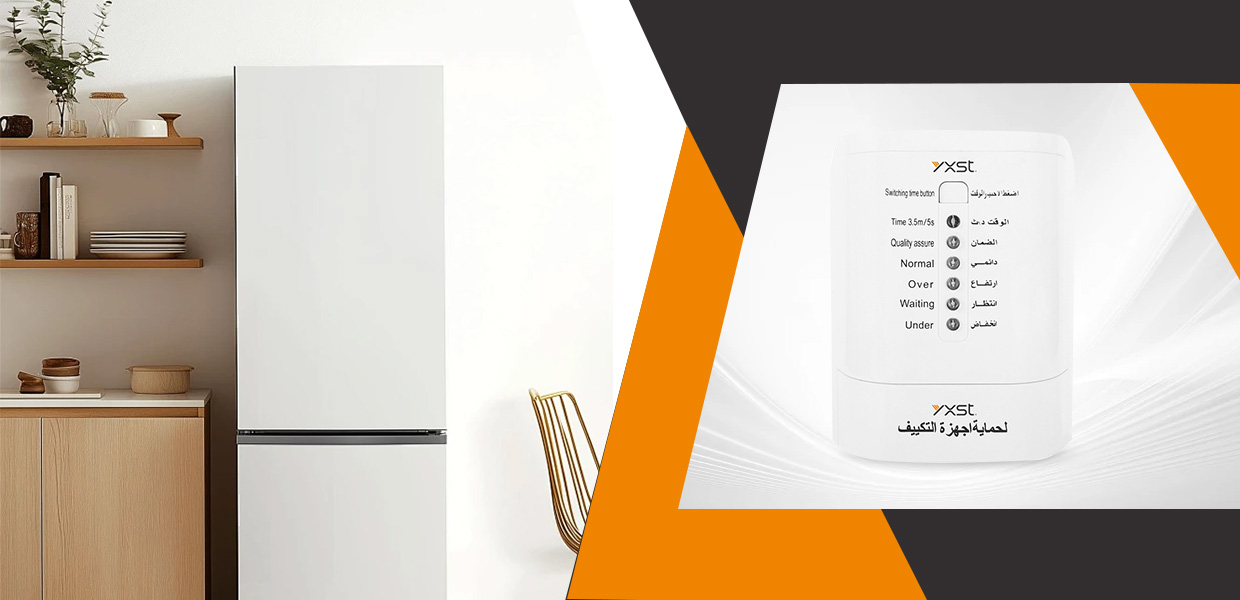Refrigerator Power Surge Protector Factory Talks Neutral Line
Date:2025-04-23 Click:911
Refrigerator power surge protector factory talks about the impact of neutral line disconnection on smart home appliances? The impact of neutral line disconnection on smart home appliances is far greater than that on ordinary appliances, because they are highly dependent on stable voltage and digital control. The following is a specific analysis and protection suggestions:
The unique vulnerability of smart home appliances
1. The power module is vulnerable
Smart home appliances (such as smart refrigerators and air conditioners) use switching power supplies, and the design withstands voltage is usually ±10% (such as 207-253V for 230V systems). After the neutral line is broken, the single-phase voltage may soar to 400V, resulting in:
Capacitor burst (such as electrolytic capacitors with a withstand voltage of only 450V).
Controller chip overvoltage breakdown.
Case: The power IC burnout rate of a certain brand of smart speakers at 380V voltage is as high as 90%.
2. Communication module failure
Wi-Fi/Bluetooth module: Low-voltage DC-DC converters (such as 3.3V step-down modules) may short-circuit when the input is overvoltage, which may damage the main control CPU.
Gateway: Sudden voltage changes cause signal packet loss, and a manual reset is required to restore networking.
3. Data loss and system crash
Problem: Smart TVs and NAS devices may have abnormal voltage:
Flash write errors (such as Linux systeProtection solution
1. Special protection equipment
AVS30 neutral line disconnection protector:
Action threshold: When the voltage >275V is detected, the power supply is cut off within 20ms (5 times faster than the conventional Undervoltage protector).
Intelligent delayed restart: Wait for 3 minutes after the voltage stabilizes to ensure that the smart device is fully discharged.
High voltage cut-off combination:
Online UPS maintains power supply while monitoring the neutral line status, and switches to battery mode when abnormal.
2. Self-protection of smart home appliances
Choose products with wide voltage design. For example, some high-end routers support 100-240V input (you need to confirm whether it is really wide voltage; some are only nominal).
Install an isolation transformer: isolate the power supply of smart devices from other electrical appliances to reduce voltage coupling when the neutral line is disconnected.
3. IoT-level protection (industrial scenario)
Three-phase, unbalanced monitoring system: real-time detection of neutral line current through CT coil, warning of potential disconnection risks.
Automatic star-delta switching: three-phase smart devices can switch operating modes to reduce dependence on neutral lines.
m log damage).
The firmware program is out of order and the system needs to be reflashed.
Data: A laboratory test shows that when the voltage is above 300V for 2 seconds, the crash rate of a smart TV system reaches 65%.
Typical smart home appliance damage scenarios
| Device type | Directly damaged parts | Indirect impact |
| Smart refrigerator | Compressor driver board, Wi-Fi module | Cloud recipe synchronization failed, temperature control logic disorder |
| Robot vacuum cleaner | Charging contact circuit, sensor | Map data lost, return positioning failed |
| Smart door lock | Battery management, fingerprint module | Temporary mechanical key unlocking, security log interruption |
| Smart lighting | LED driver power supply, chip | Dimming parameter reset, group control failure |
Why are smart home appliances more difficult to repair?
Chip-level damage: For ordinary appliances, you can replace the fuse, but the main control of smart devices (such as Qualcomm IOT chip) requires professional repair.Software compatibility issues: After replacing the power module, it may not start due to firmware signature verification failure.
Cloud service interruption: The device serial number is bound to the cloud, and the manufacturer needs to re-authorize it after the motherboard is replaced.
Protection solution
1. Special protection equipment
AVS30 neutral line disconnection protector:
Action threshold: When the voltage >275V is detected, the power supply is cut off within 20ms (5 times faster than the conventional Undervoltage protector).
Intelligent delayed restart: Wait for 3 minutes after the voltage stabilizes to ensure that the smart device is fully discharged.
High voltage cut-off combination:
Online UPS maintains power supply while monitoring the neutral line status, and switches to battery mode when abnormal.
2. Self-protection of smart home appliances
Choose products with wide voltage design. For example, some high-end routers support 100-240V input (you need to confirm whether it is really wide voltage; some are only nominal).
Install an isolation transformer: isolate the power supply of smart devices from other electrical appliances to reduce voltage coupling when the neutral line is disconnected.
3. IoT-level protection (industrial scenario)
Three-phase, unbalanced monitoring system: real-time detection of neutral line current through CT coil, warning of potential disconnection risks.
Automatic star-delta switching: three-phase smart devices can switch operating modes to reduce dependence on neutral lines.
User emergency response steps
1. Immediate action:
When you find that the lights are abnormally bright/smart devices are collectively offline, turn off the main switch immediately.
Unplug all smart devices (including set-top boxes in standby mode).
2. Check after recovery:
Restart the router/gateway first, and then gradually connect other devices.
Check whether the device APP has firmware abnormality prompts (such as Xiaomi Mijia displays "module communication error").
Manufacturer response trend
1. Hardware improvement:Use the TVS diode array to enhance the surge resistance of the power module.
Add supercapacitor backup power supply to ensure safe shutdown in abnormal situations.
2. Software protection:
Automatically enter read-only mode when the voltage is abnormal.
The last state is saved in the cloud and automatically synchronized after repair.
Conclusion


